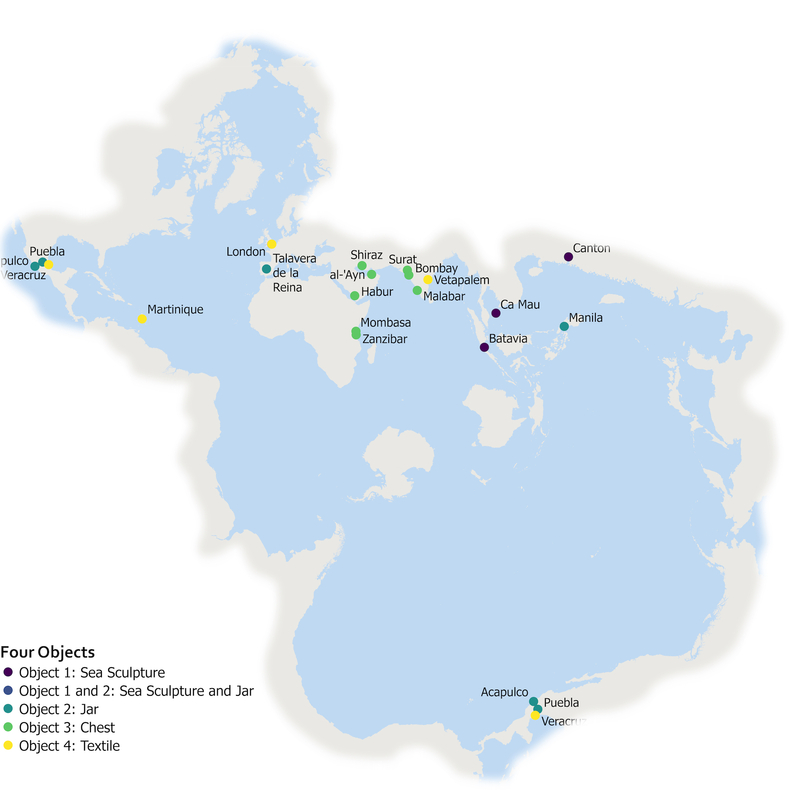Continuing the Conversation: Four Objects
Links from the speakers:
Please click here for the map associated with the presentation
Indian Ocean Exchanges: New program for early career scholars working on Indian Ocean World art and material culture histories sponsored by The Getty Institute
A helpful conversational thread from the Zoom live chat window:
From Kelsey Utne (she/her) : this question of conveyance materials very much applies to the transit of coffins and urn
From Romita Ray : I second Vivek ’s call to think about how topographical association coaxes us to imagine and wonder about objects in new ways.
From Vivek Gupta : A great starting point is Daston and Park’s foundational chapter on topographical wonders. (Book: Wonders and the Order of Nature, 1150-1750)
From Romita Ray : Can we think of topographies of touch—so important for each of the objects you showed, and crucial to the physical flow of trade
Information & links generously shared by the participants:
From Marina Thayil : There is a collection of Chinese ceramics from the Belitung shipwreck at the Asian Civilizations Museum at Singapore. Some of it is coral encrusted like this one.
From denisemarieteece : An interesting contemporary piece for comparison… Koi Junk Teapot at Seattle Art Museum
From Tünde Fegyvári-Komori : Greetings from Budapest, Hungary. Thank you for this webinar, it is wonderful to have the opportunity to listen to your research. With shipwreck salvaging, probably a large issue is that if commercial companies are involved, than scholarly research of the cargo is usually not supported, let alone publication... Here in Hungary (as well as Transylvania, Serbia and Bulgaria) there is a lot of Chinese porcelain from the early modern period (16-17th centuries) unearthed at archaeological sites, and it is very difficult to research their way from China to here partly because of the missing publications of shipwreck cargoes, although the Southeast Asian shipwrecks usually contain much closer parallels for the sherds excavated in this region than the curated collections exhibited and studied in Western Europe (e.g. these brown glazed Kangxi cups, which are very common in the archaeological material in Hungary)
From Sri (she/her) : Thinking about the ethics of such maritime objects that was raised earlier, I am just dropping in this essay which I believe touches upon many of the points raised : Han, L. (2019). The Blue Frontier: Temporalities of Salvage and Extraction at the Seabed. Configurations 27(4), 463-481. doi:10.1353/con.2019.0031
From Paul Albert : Angela Ho (of GMU) has a great case study of Dutch designs being sent to China for production and then being adopted by Chinese manufacturers for domestic use in China - https://brill.com/view/journals/nkjo/69/1/article-p174_7.xml
From denisemarieteece : Another ‘local’ adaptation of the phoenix… from The Met Collection
From Charne Lavery : Abdulrazak Gurnah’s By the Sea is a wonderful novel in which the conveyancing of ud in a casket is central to the narrative. Set in Zanzibar.
From Leedom Lefferts - NC : Wish to refer everyone to Dainotto 2000 "Place in Literature", which seeks to dethrone the ahistoricity of "place". Important in this context!
